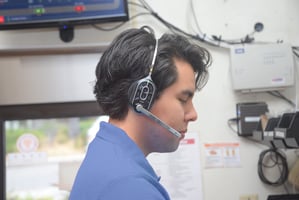In the fast-paced world of quick-service restaurants, every second counts. Customers expect fast,...
How to Choose the Best Drive-Thru Headset for Your Restaurant
Discover how a drive-thru headset improves speed, accuracy, and team coordination in restaurants. Learn the key features, AI integration, and scalable solutions you need to look for to take your operation to the next level.
Why the Right Headset Matters
A busy restaurant thrives on speed, accuracy, and seamless communication. The right drive-thru headset is more than just a tool for taking orders—it’s a central hub for your team to coordinate, reduce errors, and deliver a superior customer experience. From the front counter to the kitchen, a modern headset keeps everyone connected, even during the most hectic shifts.
Essential Features to Look For:
- Noise-Canceling Microphone
Blocks background noise so every word is heard clearly, reducing errors and improving service speed.
- Cloud Connectivity & AI Integration
Cloud-enabled headsets allow managers to monitor performance and integrate with systems, while AI features can automate order taking and optimize workflows.
- Scalable & Team-Friendly
Supports multi-channel communication for front counter, kitchen, and management teams, and easily expands as your restaurant grows.
- Comfortable & Easy to Use
Lightweight, adjustable designs with intuitive controls ensure all team members can wear and operate headsets comfortably throughout long shifts.
- Durable & Long-Lasting
Built to withstand daily wear, with long battery life to keep service running smoothly.
Can’t Decide Between Wired and Wireless Headsets?
Wired headsets are reliable and simple to maintain but limit mobility. Wireless headsets offer flexibility and freedom of movement. Consider your team size, layout, and volume when deciding between the two.
Matching the Headset to Your Team and Volume
Small teams may only need a single-channel system, while high-volume locations benefit from multi-channel setups that allow simultaneous communication without message overlap. Choosing the right system ensures efficient coordination during peak hours.

